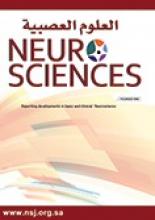Abstract
The Wada test was initially used to identify the hemisphere of language dominance prior to epilepsy surgery, but was subsequently applied to identify patients at risk of amnesia after temporal resection. The Wada test was later found useful in lateralizing the epileptogenic zone, predicting postoperative memory function, and predicting postoperative seizure control. The Wada test became more widely used, and in many centers became a standard component of the presurgical evaluation of epilepsy. Yet, several problems and disadvantages have surrounded the Wada test, including absence of standardized technique, overestimation of postoperative deficits, and risks and discomforts related to the invasive nature of the procedure. The Wada test may be omitted in patients who have excellent localization of the epileptogenic zone and who do not appear at risk for postoperative memory or language compromise. In addition, there is a promising alternative in functional magnetic resonance imaging (fMRI), which has already demonstrated excellent agreement with the Wada test for language dominance. Progress is being made in memory fMRI as well. The Wada test identifies the capacity of one hemisphere to sustain memory, and language functions while the other hemisphere is inactivated, while fMRI identifies regions activated by language or memory tasks. Some of these activated regions may not be essential for the activating tasks. Before fMRI can fully replace the Wada test it has to specifically identify those activated regions that are essential for memory or language function, and also measure the memory reserves of the hemisphere contralateral to surgery.
- Copyright: © Neurosciences
Neurosciences is an Open Access journal and articles published are distributed under the terms of the Creative Commons Attribution-NonCommercial License (CC BY-NC). Readers may copy, distribute, and display the work for non-commercial purposes with the proper citation of the original work.






